Shannon V. OKeets
Posts: 22095
Joined: 5/19/2005
From: Honolulu, Hawaii
Status: offline

|
April 1, 2012 Status Report for Matrix Games’ MWIF Forum
Accomplishments of March 2012
Project Management
I monitored all the threads in the MWIF World in Flames forum daily.
Hardware and Software
Matrix solved my difficulty with HTTP requests that included cookies. The problem was that the expiration date on the cookie indicated it was no longer valid, so the Indy10 software package did not use it. Once the Matrix programmers changed the cookie’s expiration date so it was valid, all was well. I am now able to access the NetPlay server’s Seeking Opponents database. The Matrix programmers also finished their changes to the NetPlay server so players no longer need to work with IP addresses, port numbers, and security issues to play the game over the internet. There is more on that topic below under NetPlay.
The open items for Theme Engine remain unchanged: (1) scroll bars for the detailed map, and (2) its inability to display detailed listings of file directories (i.e., the dates and stuff when opening or saving a file).
Beta Testing
I released versions 9.05.00 (4 fixes), 9.05.01 (29 fixes), 9.05.02 (31 fixes), 9.05.03 (2 fixes), 9.05.04 (27 fixes), 9.05.05 (15 fixes), 9.05.06 (15 fixes) , and 9.05.07 (7 fixes) to the beta testers in March. This is about my normal number of new versions (8) and fixes (128). While I was waiting for Matrix to make the necessary NetPlay changes (completed late in the month) I bore down on the bug list.
My first batch of fixes were for air mission bugs. Rob had detailed a lot of those and I was able to fix most of them; there are still 13 to do. Then I cleaned up all the setup, Declaration of War, and reorganization bugs. The last large batch I fixed were for naval movement and naval combat; I now have the naval bugs down to 7. The other large list of bugs to fix is in Production Planning. I keep trying to clean up other issues so I can focus exclusively on that phase of the game, but distractions abound.
Some of the new beta testers are getting involved. Peter v. in particular has been working closely with Rob W. on the interactive tutorials. That’s discussed more below.
Saved Games
Nothing new. I need to write a bit of new code for restoring internet games.
Map, Units, and Scenarios
Changed the Zuider Zee to IJsselmeer in the map data so the correct name appears on the map.
Optional Rules
Nothing new.
Rules Precision
Nothing new.
Player Interface
I automated the creation of default screen layouts for new players. In a nutshell, the program checks out what monitors you have on your system and makes an intelligent guess at the best size and location of important forms. This way the program appears tailored for your system. At the end of this report is an excerpt from the Players Manual that describes that automation in more detail.
Internet - NetPlay
I spent the last third of the month mostly working on NetPlay. I had to trash the code I had just gotten to work for exchanging data directly between two players’ computers. The new design is cleaner and easier to support but it was painful to remove code that functioned correctly.
The new design avoids the security hassles with one computer permitting another computer to ‘call’ and initiate a “conversation with a stranger”. Instead of having to deal with ports, firewalls, and other security/protection features, a player simply logs into the Matrix server dedicated to World in Flames to play a game over the internet with a worthy opponent.
The past couple of days I have been working with the JSON data structure, which is what the Matrix server uses for posts. I’m close to getting that to work. Behind the scenes, the JSON database stores the NetPlay “seeking opponent posts” by players. You will be able to post a request and reply to other players requests. Ideally this will let players find opponents for NetPlay games easily.
I still need to write new code to have the players’ computers send/receive messages and game data when playing over the internet. Once I get the Seeking Opponent and Messaging systems working I can take the final screenshots and finish the last few paragraphs of the Players Manual. Then I’ll be reduced to just tearing my hair out whenever I see a typo in the Players Manual.
PBEM
Nothing new.
Artificial Intelligence (AI)
Nothing new.
Player’s Manual
Late in March John sent me his final edited version of the Players Manual. It was 523 pages without figures. Of course the number of pages depends on the page size, margins, font size, and line spacing. For instance, my version came in at 350 pages and that was with all the figures included. As of today, I have proofread 404 of John’s 523 pages and I should finish the rest in a few days. The figures are also almost ready for Marc (who will merge the text and figures). My last count was 271 figures for the Players Manual of which 265 are ready for Marc, with 3 screenshots to be retaken and 3 new screenshots needed for NetPlay.
After Matrix’s discussions with the printers it looks like the Players Manual and Rules as Coded will be separate volumes. There had been some consideration of making them a single volume containing two ‘Parts’.
Tutorials, Training Videos, and Context Sensitive Help
I corrected the graphics used in the 10th picture and text tutorial (sequence of play) so they use underlined text instead of colors. This had been a problem for some beta testers with difficulty distinguishing colors.
My wife updated the Content Sensitive Help messages for the revised Screen Layouts section and a few other sections that I updated while proofreading the Players Manual. Only the NetPlay message will need further revision - once I finish coding NetPlay.
Rob W. Has completed 8 of the 10 Interactive Tutorials, with Peter v. beta testing them heavily and finding a bunch of improvements for Rob to make. He and Rob are working out the details. I am trying not to get involved since I’ve got so much else to do. Hopefully with the new beta testers also putting those tutorials through their paces, the group will be able to buff and polish them without me doing very much.
One of the changes Rob and Peter decided on was to change the order of the tutorials so the sequence is air, land, and naval. Because naval units are the most difficult units to move and engage in combat, we’ve put it last - after the player has had a chance to build up his familiarity with unit movement and combat in general.
Because the beta testers were complaining that they didn’t understand what they were suppose to do with the interactive tutorials, I’ve created a title page for each. It gives a short overview of the tutorial and itemizes what you will have learned once you complete it. To address the problem of how to execute the tutorial, the title page contains some standard paragraphs at the bottom that explain the instruction form, which the player uses when going through the tutorial. If you want to see what the title pages look like, last week I posted the first 7 (#11 through #17) in the thread MWIF Game Interface Design. Rob just sent me #18, so I’ll do a title page for that tomorrow.
At this point I think the interactive tutorials will be a popular way for players to learn the player interface and other important game elements (e.g., setting up units, moving units, engaging in combat, and production).
Historical Video, Music, and Sound Effects
Nothing new. I am still trying to find a week of time to embed all of these into the sequence of play.
Marketing
Nothing new.
Excerpts from Players Manual section 8.6 Screen Layouts
Form Dimensions and Locations
Many forms have fixed dimensions and locations, though they can all be rolled-up by clicking on the small icon in the upper left corner of the form. That reduces the form to a thin horizontal bar (i.e., just the top of the form). You can restore the full form by clicking on that icon a second time.
The more important forms can be resized to meet your personal taste: detailed maps, the global map, the setup tray, the screen layouts list, map view lists, selectable units, naval review details, etcetera. Each screen layout stores the location (and usually the size) of the following forms:
1. Main form
2. Screen layout list
3. Map views list (a separate entry with size, location, and content is made for each major power)
4. Detailed maps (a separate entry with size, location, and display controls is made for each detailed map on the screen).
5. Global map
6. Sequence of Play (only the location is stored since the size is dynamic)
7. Setup tray (this can be expanded horizontally to see more units).
8. Units in hex (this can be expanded horizontally to see more units).
9. Selectable units (this can be expanded vertically to see more units).
10. Naval review details (this can be expanded vertically to see more units).
11. Naval review summary (a separate entry with size, location, and content is made for each major power)
12. [Task force details. Not used.]
13. [Task force summary. Not used.]
14. Land combat resolution
15. Dice
16. Chat
17. Interactive Tutorials
New Game.SLY
One of the most important things to know when starting a new game is that for each scenario there is a screen layout with the name “New Game.SLY”. These are the 11 SLY files that the program uses to start new games. The “New Game.SLY” files are slightly different for the 11 scenarios, since the number of major powers and the frontlines change from scenario to scenario. So, if you start a new game for the Barbarossa scenario, then MWIF uses the “New Game.SLY” file in the Barbarossa directory to determine the location and dimensions for all the forms listed immediately above.
.
.
.
If MWiF cannot find New Game.SLY, it automatically creates a New Game.SLY for the scenario. The newly created screen layout takes into consideration how many monitors are on the system and the size of the monitors. Based on that data, the program defines positions and sizes for all the forms listed above. It also defines a set of map views for each major power for each scenario, and stores that information within the new screen layout file.
.
.
.
After you acquire some familiarity with game play, it behooves you to spend some time modifying (i.e., Redefining) the “New Game.SLY” file to suit your own preferences.
.
.
.
Minimal Screen Size (1024 by 768)
Figure 8.6.C shows the default screen layout for the minimal configuration. It positions the Main form at the top left of the screen and the Detailed Map below it. To the right of the Main form, at the top of the screen, are the screen layouts list and the map views lists.
When other forms appear, they overlay the detailed map, and possibly even the main form - if they use the full 1024 by 768 footprint. The first few forms you see when you start a new game (lend lease and scrap units) and all the forms used during combat require this maximum footprint. In contrast, the setup tray has been made as small as possible and is positioned at the bottom of the screen, to maximize the amount of viewable area on the detailed map. So too the Main form, Screen Layouts list, and Map Views list have been scrunched down to as small a foot print as possible.
.
.
.
There are numerous helpful forms that you might want to examine during game play. The Global Map, Sequence of Play, Units in Hex, and Selectable Units forms are just some examples. With the minimum monitor size you will probably just toggle these on and off using the short cut keys defined for them. Or you could “roll them up” using the small up-arrow triangle icon in the upper left of every form.
.
.
.
Other Single Monitors
If you have more than the minimum width available, MWiF repositions several forms when it creates a new New Game.SLY. Figure 8.6.E shows the layout for a monitor that is 1280 by 1024. It has the Main form positioned somewhat to the right, leaving room for the Selectable Units form to appear between it and the left edge of the screen (i.e., in the upper left corner). The detailed map is extended to use almost the full width of the monitor, leaving room for the Global Map to peek through on the far right. Notice that the screen layouts list and map views lists are no longer cropped vertically as they are for a minimally sized monitor.
With very large monitors, the Global Map is placed at the top, making the entire width of the form available for the detailed map. Figure 8.6.E is an example of the default screen layout for a monitor that is 1920 by 1080.
.
.
.
Dual Monitor Systems
Dual monitors provide more real estate for the MWIF forms and therefore more flexibility in screen layouts. The automatic creation of the New Game.SLY file only considers the situation where there are two monitors. If you have more than two, then the two leftmost monitors are used. You can create your own New Game.SLY file for three or more monitors by starting with the one automatically created for two monitors.
.
.
.
The left monitor is devoted to the detailed map, with the setup tray placed at the bottom, when in use. The Selectable Units for appears on the left side of the left monitor when that form is active (as shown). The default position for the Units in Hex form is in the upper right corner of the detailed map (not shown).
The right monitor holds principally: the Main form, Global Map, Screen Layouts list, Map Views list, Sequence of Play, Naval Review Details, Naval Review Summary, and all other forms that appear during game play. The basic concept here is that your main detailed map is never obscured by large forms, and is omnipresent. The exceptions are the Setup Tray, Selectable Units, and Units in Hex forms; the reason they overlie the detailed map is so the “mouse distance” from a unit in those forms to a location on the detailed map is minimal. For example, moving the mouse back and forth from the setup tray to the detailed map can be tedious if the two are far apart and you have 50+ units to set up.
Of course, you can design the layout however you like, and there are going to be numerous variations given the variety of monitor combinations possible. Indeed, the entire purpose behind the screen layouts feature is to enable you to tailor MWiF to accommodate your particular hardware configuration and personal preferences.

_____________________________
Steve
Perfection is an elusive goal.
|
 Printable Version
Printable Version
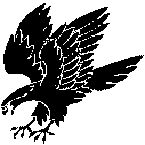






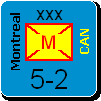




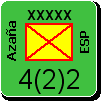


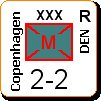
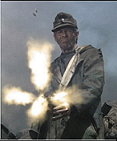
 That's me banging out the bugs.
That's me banging out the bugs.
 New Messages
New Messages No New Messages
No New Messages Hot Topic w/ New Messages
Hot Topic w/ New Messages Hot Topic w/o New Messages
Hot Topic w/o New Messages Locked w/ New Messages
Locked w/ New Messages Locked w/o New Messages
Locked w/o New Messages Post New Thread
Post New Thread